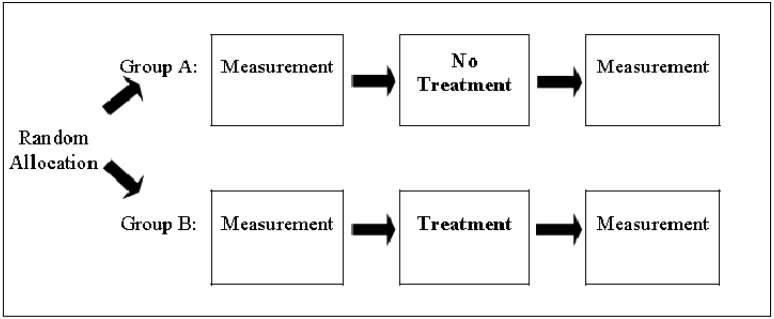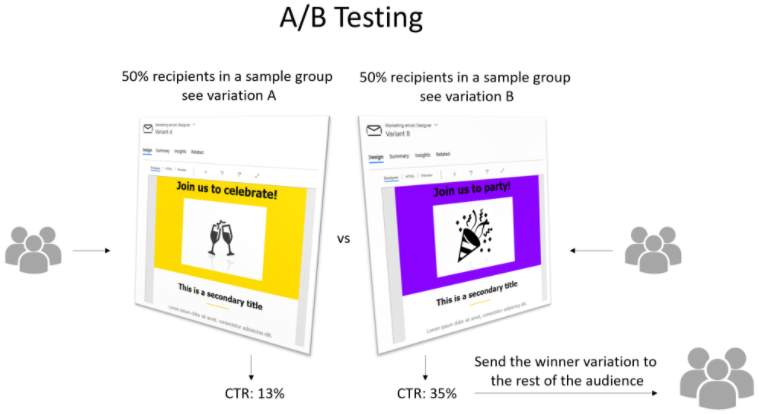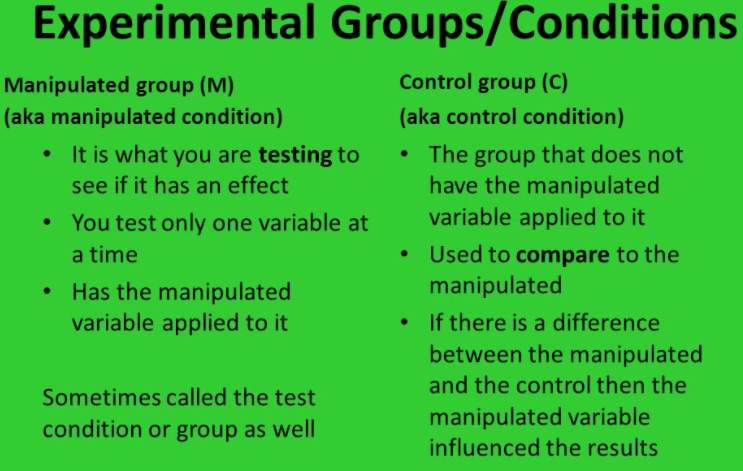Table of Content
Generally speaking, it seems much simpler to inquire about the results mobile marketing delivers than determining the measurable answers. The key challenges range from ascertaining when to measure different performance indicators, to dealing with metrics like multi-touch attribution or influencers.
Nonetheless, one way to determine how users interact with a given marketing activity or campaign is via mobile testing using test groups and control groups. Today’s discussion aims to focus on the role test groups and control groups play in marketing and the differences between the two.
What Is a Test Group?
Principally, a test group (sometimes called an experimental group) is basically the name attributed to a group of users analysed as part of a study. For example, suppose a marketer is running a mobile A/B test, and the generated variables are to be sent to a set proportion of users. In that case, a test group shall be the total number of users being sent either variable.
In practice, it’s inconsequential how many variables you are testing, or how long the tests run for. This is because the test group essentially remains consistent throughout the study, as well as the number of mobile users’ interactions being measured, from the start of the study to the end.
 How test (B) and control (A) groups are handled. Image Credit: researchgate.net
How test (B) and control (A) groups are handled. Image Credit: researchgate.net
Furthermore, test groups should not just contain user segments sent different variables, as one runs the risk of confirmation bias in their results. However, to ensure the accuracy of any tests, test groups should always have what we call a ‘control group’.
What Is a Control Group?
For the most part, a control group is basically a group of subjects/individuals who serve as a benchmark/baseline for comparison in a test group.
In the mobile marketing context, a control group constitutes a group of mobile users for whom content and interactions stay unchanged throughout testing. Using control groups to measure the interactions with a marketing campaign, mobile marketers can deeply understand how different variables change their results. This means that without a control group, it is difficult to confirm the real impact of any marketing variables being tested.
 An example of how control groups work. Image Credit: khanacademy.org
An example of how control groups work. Image Credit: khanacademy.org
Generally, control groups are leveraged in multiple different areas of marketing and research. For instance, during drug trials where a group of people don’t receive any of the drugs being tested, and instead, are only given a placebo. This consequently allows researchers to extensively study the results of any drugs being tested, and compare them to scenarios in which participants received no treatment. In practice, control groups work in exactly a similar manner.
Characteristics of a Control Group?
During tests, data from experimental groups is basically compared with data from a control group. In practice, both these two groups ought to be identical in every respect except one. Ideally, the key distinction between control groups and experimental groups is that the independent variable is essentially changed for the experimental group, but held constant in the control group.
That being said, a control group is majorly a group separated from the rest of the test so that the independent variable being tested doesn’t influence the results. This fundamentally isolates the independent variable’s effects on the test, and can help rule out alternative explanations of the test results.
Furthermore, while all tests have a test group, not all tests require a control group. Generally, controls are highly useful where the test conditions are sophisticated and difficult to isolate. In most cases, experiments that leverage control groups are called controlled experiments.
Principally, marketers might choose to integrate a control group into their tests, mainly A/B testing and multivariate testing, as they particularly help ensure that such tests’ results are highly accurate. Remember, control groups should always constitute similar users to groups being sent different variables. In essence, if the characteristics of the users significantly differ across these groups, then the results of the test could be misleading.
 An example of A/B testing. Image Credit: microsoft.com
An example of A/B testing. Image Credit: microsoft.com
What Are the Differences Between Test Groups and Control Groups?
In practice, control groups are much smaller than test groups so that most users get exposed to the marketing campaign in question. By default, test and control groups are segmented in a ratio of about 90%-10% of users. Though one can adjust this ratio to whatever makes the most sense for them.
Generally, control groups are primarily used to compare effects or clear differences with test groups. Fundamentally, control groups come in two forms: positive control and negative control. Essentially, if there is an evident effect or expression in the test group, it ought to be similar to positive control, otherwise, it shall be identical to negative control.
Both test and control groups shed light on market testing results in two unique ways. Firstly, they provide actionable insights and context about how a campaign and campaign variants affect users’ behaviours, if at all.
 An example of how control groups work. Image Credit: marketbusinessnews.com
An example of how control groups work. Image Credit: marketbusinessnews.com
Secondly, they provide intelligence that can help limit over-messaging, especially when it comes to accomplishing cost-effective campaigns. This is imperative since customers are always likely being flooded with marketing messages across different channels from a variety of competing marketers.
For example, if you send out a marketing campaign (without a control group) and observe high conversion rates generated from the campaign. Basically, your first reaction might be to think that some aspect of that campaign, be it an image, or the delivery channel, is driving this KPI to increase.
On the flip side, imagine sending the same campaign with a control group. In this instance, you might observe that the control group and the test group manifest similar conversion rates. In this case, the main takeaway is that your users are exhibiting the same behaviour, regardless of being sent the new campaign or not.
Similarities Between Test and Control Groups.
As we have already established, a control group is basically a subset of a test group under study, selected under the same rules governing the test subset.
As such, where a complete group is under study, a fraction of the group, which is a fair representation of the breadth of variance for the factor being tested, is the control and the remainder is essentially the experimental fraction.
That being said, the control group frames a baseline or a reference, to determine the extent of change, and its efficacy after testing is performed.
Test and control groups are majorly used in pharmaceutical settings, where a test cannot be performed on the entire population. For statistical comparison purposes, before experimentation, one should show no distinctions between the control and experimental groups for whatever is being tested. As a result, a comparison between both groups after testing, as well as between pre-and post-test data, will resultantly show efficacy and significance. Overall, pre-and post-test data collection on a test group with no control isn’t comprehensive.
Steps to Effectively Using Test and Control Groups
To effectively use test and control groups, one needs to initially clearly define the test group’s parameters that are exposed to the variable they are testing, then define a comparable control group that is not exposed to their marketing efforts.
Essentially, this is a critical step in setting up a controlled experiment. In practice, this involves identifying specific characteristics of one’s users like demographics, purchasing behaviours, or geography.
Furthermore, ensure that the test and control groups aren’t systematically different from one another. For example, those who are exposed to adverts could be more or are less likely to convert than those who are not exposed.
Overall, well-designed controlled tests use randomised assignments of the test units for both test and control groups. For instance, this can be performed by identifying website visitors individually (maybe via a cookie-based test) or the visitors’ geographic region (employing a geo-based test). In essence, choosing a random population basically ensures that you do not choose a test group prone to showing more optimistic or biased results.
When a Control Group May Be Unnecessary
In all honesty, if you’re planning to switch up your marketing strategy, you should use a test and control group to guide you in the process. In practice, a portion of your audience as low as 5-10% is worth confirming your baseline assumptions of a new product or service. Basically, that your intended campaign message will trigger a different behaviour from the users who receive it, in contrast to users who do not.
As such, if you want every audience member to get the chance of viewing the same exact campaign or marketing change, then a control group is a no-brainer. However, you always still have the option to send the marketing message to your control group once the experiment is complete.
Though, do note that for really urgent and timely cases, like breaking news or a call to action for users to update the app, control and test groups might not be applicable.
Conclusion
As has been noted, test and control groups provide a comprehensive way to measure the performance of one’s marketing efforts. This is done by exposing a defined set of users (test group) to a marketing campaign, while also isolating a smaller set of users (control group) from that same campaign. As a result, mobile marketers can visualise how well a campaign performed by critically comparing the behaviours of the two groups.
Related Sources to Read:
–When to Consider Mobile App Development for Your Business
–Why Mobile Apps Are Important for Your Business
–Factors to Consider When Hiring a Mobile App Development Company
–Mobile App Development Cost Estimate in Malaysia
If you’re looking for a top-notch Mobile App Developer, your search ends here! One of the renowned Mobile App Developer in Malaysia has what it takes to bring your mobile app ideas come to life. Contact us now for more expert developers.



